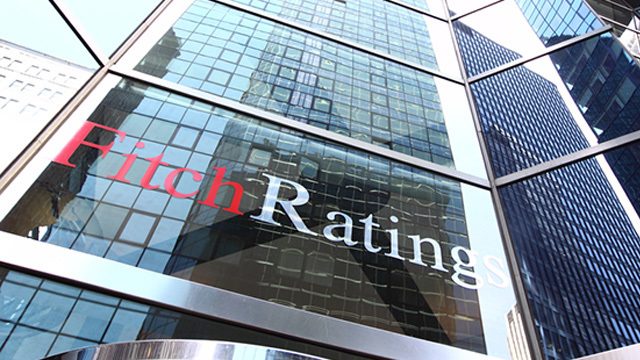SUMMARY
This is AI generated summarization, which may have errors. For context, always refer to the full article.

MANILA, Philippines – Debt watcher Fitch Ratings maintained the Philippines’ credit rating at a minimum investment grade of BBB-, with the government believing it is underrated “by at least a notch.”
Fitch said in a statement on Friday, April 8, that it has maintained the country’s long-term foreign currency issuer default rating at BBB- or good credit quality.
An investment grade is a seal of good housekeeping, as it signals to investors that it is safe to do business and encourages them to put huge capital in the country. (READ: INFOGRAPHIC: What a credit rating upgrade means for Filipinos)
The finance department said that while the rating is within the investment-grade scale, it is the lowest among scores assigned to the Philippines by a host of credit rating agencies.
“President [Benigno] Aquino [III]’s commitment to good governance is yet again affirmed. Nonetheless, we believe that we are still underrated by at least a notch,” Finance Secretary Cesar Purisima said in a statement.
He said the rating given by Fitch reflects significant discrepancy with how financial markets actually assess the credit worthiness of the country.
“The Philippines continues to outshine similarly rated peer sovereigns amid global volatility. Likewise, we continue to outperform with better fundamentals and robust domestic drivers of growth,” Purisima added.
Purisima: PH is underrated
Financial markets believe the Philippines is much less of a credit risk compared with other countries enjoying higher credit ratings.
The department said credit default swap (CDS) spread on the Philippines’ 5-year bonds stood at 116.35 basis points (bps) on April 7, better than the 264.87 bps for Colombia, 145 bps for Thailand, and 182.34 bps for Mexico.
Fitch assigns a higher credit rating of BBB to Colombia, and an even higher rating of BBB+ to Thailand and Mexico.
Purisima said the Philippines’ debt burden is also more manageable compared to countries with higher credit ratings.
In 2015, the Philippines’ general government debt as a percentage of gross domestic product settled at 36.8%, better than Colombia’s 44.4%, Panama’s 40.6%, Mexico’s 44.6%, Spain’s 99.1%, and Italy’s 133.3%.
“Panama is rated a notch higher by Fitch at BBB. Mexico, Spain, and Italy are rated two notches higher at BBB+,” the Philippines’ finance department said.
For Purisima, the Philippines has had a solid 6-year run of growth and stability as the world’s most upgraded sovereign.
“But as they say, the biggest room in the world is the room for improvement. With another upgrade in the offing, the onus for continuity looms larger than ever,” Purisima added.
Meanwhile, Bangko Sentral ng Pilipinas (BSP) Governor Amando Tetangco Jr said the Philippines is expected to continue enjoying an inflation environment and a financial system supportive of robust economic growth.
“The BSP, which enjoys policy independence and fiscal autonomy from the national government as enshrined in law, has put in place sound frameworks for monetary policy and bank supervision,” Tetangco said.
Investor Relations Office (IRO) Executive Director Editha Martin said a credit rating upgrade from Fitch is overdue.
The existing rating of BBB- has been in place since March 2013.
“Since then, the Philippines’ macroeconomic performance and public finances have improved, and additional governance reforms were put in place,” Martin said.
Strength: External finances
In its report on the Philippines, Fitch recognized favorable factors that have upward influence on the country’s credit rating.
These include robust economic growth, declining debt burden, stable banking sector, and strong external payments position.
“External finances are a ratings strength. The Philippines has been running current account surpluses since 2003, with average of around 3% of GDP for the period 2011-2015. This has been helped by the steady remittance inflow and has led to a buildup in foreign exchange reserves,” Fitch said.
The credit watchdog also acknowledged the effectiveness of the BSP in helping keep the country’s banking sector stable.
“Active supervision and regulation by a risk-aware central bank, which has progressively strengthened risk management requirements for the banks over the years, help to temper the risks from high credit growth,” Fitch said.
The Philippines’ credit rating of Baa2 with Moody’s Investors Service, and its BBB rating with Standard & Poor’s, NICE Ratings, and R&I are a notch higher than the rating assigned by Fitch.
The Philippines’ credit rating of BBB+ with Japan Credit Rating Agency is two notches higher than the rating assigned by Fitch. – Rappler.com
Add a comment
How does this make you feel?
There are no comments yet. Add your comment to start the conversation.